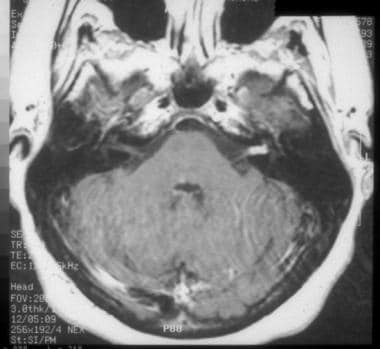

Hearing tends to decline slowly over the years, and is more likely to happen in older patients, larger tumours, or patients with a greater degree of hearing loss prior to treatment.Acoustic neuroma, acoustic neurilemmoma, perineural fibroblastoma, neurinoma of the acoustic nerve, neurofibroma of the acoustic nerve, schwannoma of the acoustic nerve īilateral schwannomas in a patient with neurofibromatosis 2 This is not uncommon but depends on hearing status before treatment and is variable. In some cases the tumour can slightly increase in size at around 6-12 months. Overall the risk of damage to the cranial nerves with modern radiation therapy techniques is low at less than 5%. The main concern is damage to the cranial nerves in the region. Long term side effects following radiation therapy for vestibular schwannoma can occur months or years after treatment. Most patients do not notice any immediate side effects with stereotactic radiation therapy for vestibular schwannoma, although headache or nausea can occur rarely. Stereotactic techniques (see above) are able to achieve local control rates of between 91 to 100% at 10 years post treatment. Radiation therapy is very effective in controlling vestibular schwannomas. Stereotactic radiation therapy is a similar treatment to radiosurgery but the treatment is given over 5 to 10 sessions, rather than one single dose.įractionated Stereotactic Radiation Therapyįractionated stereotactic radiation therapy uses the same technique as described above with stereotactic radiation therapy to treat the tumour but treatment is delivered given in small doses (or fractions) each day over a period of 5-6 weeks. The patient needs to be kept extremely still during treatment to ensure accuracy, so a special immobilisation face mask or head ring is used during treatment. It is non–invasive (that is NOT surgery despite the name) and usually involves just a single treatment. Stereotactic radiosurgery involves multiple high energy X-ray beams that are focused precisely on the tumour and avoiding the surrounding normal structures. The aim of radiation therapy is to stop the growth of the tumour and preserve the function of the nerve as much as possible. Conventional fractionated radiation therapy (small doses are given once a day, 5 days a week for 5 to 6 weeks) can also be used, usually for larger tumours.

Radiation therapy for schwannoma is most commonly given as s tereotactic radiosurgery or stereotactic radiation therapy (a single dose or just a few doses). Radiation therapy can also be used to treat vestibular schwannoma. If residual tumour is left behind, then this can re-grow following surgery in approximately 15% of patients. If the tumour is located too close to important nerves or blood vessels it may not be able to be completely resected. Some patients may also experience headaches following surgery. If the schwannoma is completely removed it is very unlikely to grow back, however, there is a risk of damaging nerves during surgery, which could cause further hearing loss or damage to the nerve controlling the facial muscles. This may involve accessing the tumour through the inner ear, or through an incision through the skull. Removing the schwannoma with surgery is preferred for larger lesions and in younger patients. If during observation there is rapid growth, evidence of hearing loss or development of new symptoms then active treatment should be considered. If the tumour is small, a “watch and wait” approach may be recommended with repeat imaging (usually MRI scans every 6 to 12 months) and hearing tests, rather than treating the schwannoma straight away. Most vestibular schwannomas are slow growing and may not cause a patient any significant problems over their lifetime. Active treatment is more likely to be recommended if the patient is young or the schwannoma is particularly large. Generally, active treatment will be recommended if the schwannoma is causing significant symptoms, or if it is found to be growing rapidly. The aim of treatment is to control the growth of the tumour and preserve the function of the nerves. There are several ways to treat vestibular schwannomas including observation, surgery or radiation therapy.


 0 kommentar(er)
0 kommentar(er)
